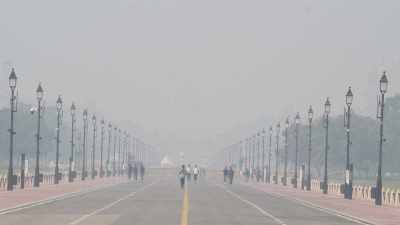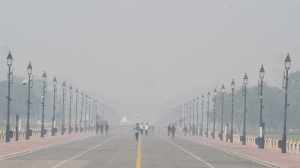The fruits of reforms
The last decade of socialism was 1980-90. And the next decade, 1990-2000, constitutes, broadly, the first decade of reforms. The Economic ...

The last decade of socialism was 1980-90. And the next decade, 1990-2000, constitutes, broadly, the first decade of reforms. The Economic Survey 1999-2000, presented to Parliament last week, shows that between 1980 and 1990, the economy grew at an average annual rate of 5.8 per cent. This was regarded as so unsatisfactory that we embarked on economic reforms to exponentially raise our growth rates to the "Tiger" levels attained in south-east and east Asia. After a decade of this new economic policy, the Survey informs us that in the decade 1990-2000 the economy has grown at an annual average of 5.76 per cent, marginally lower than the rate at which it was growing before the reformers took over.
Since, however, reforms actually began in 1991, not 1990, and it took Dr. Manmohan Singh a good year to pull the economy out of the morass, it might be more appropriate to compare the Seventh Five-Year Plan (1987-92, the last socialist Plan) with the Eighth Five-Year Plan (1992-97, the first reforms-led Plan). There is a slight measure of encouragement here, for the average annual growth rate was taken from 5.8 per cent in the seventh to 6.6 per cent in the Eighth Plan period. No miracle, but a slight shift upwards.
The disappointment is that this is peanuts compared to the breakthrough in growth in the Fifth Plan period (1974-79) when Indira Gandhi bodily shifted the economy from the 3 per cent "Hindu rate" to the 5 per cent contemporary rate. The least we could have expected from the emulators of the Asean/China miracle would have been a performance that put the socialism of the past in the shade. But the Survey shows that the increase in growth from the fifth to the sixth plans, that is, from socialism to more socialism, was the same as from socialism to the market in the first reforms-led Plan, the eighth (1992-97).
The average annual growth rate in the three years that have followed, 1997-2000, has shown no increase over that rate. Instead, the promise of the last three years of the Eighth Plan, 1994-97, when the economy grew at 6.8 per cent, 7.3 per cent and 7.8 per cent in successive years, has simply not been sustained. It fell to 4.9 per cent under Chidamabaram, has been revised by the Survey from 5.8 to 6.8 per cent for the next year, and has in the last year of the millennium been escorted back by Sinha to 5.9 per cent.
It is not enough that the economy occasionally grow at 7-8 per cent. This must be sustained year after year after year if the end-goal is to be attained. Yet, Sinha’s latest Economic Survey shows that growth has been 7 per cent or more in only three of the last ten years. In the socialist eighties, the economy grew at plus 7 per cent in as many as four of the ten years (1980-81, 1983-84, 1988-89 and 1989-90). Indeed, the highest rate of growth ever achieved by us, the only year the Indian economy has grown in double-digit figures, was 1988-89 under Rajiv Gandhi.
The picture is grimmer and more heartbreaking when we look at what the reforms decade has meant for agriculture, the sector which generates a third of our national income for two-thirds of our people, including 80 per cent of those who live below the poverty line. From 1980 to 1990, the average annual growth rate of agriculture (and allied activities) reached an all-time high of 4.8 per cent. In the decade of reforms, 1990-2000, average annual agricultural growth has slumped to 3.1 per cent, the last year having recorded a mere 0.8 per cent. Little wonder that the rate of poverty eradication was much higher in the last decade of socialism than in the first decade of reforms.
The magnitude of the achievement in agriculture under Indira and Rajiv Gandhi can be gauged in another manner. Both faced the worst droughts that India has experienced since Independence. In contrast, while rain has fallen short in some years of the last decade, the nineties have experienced no drought on the scale of the eighties. Yet, in as many as three of the last ten years of socialism, agriculture grew in double-digit figures, ranging from 10.4 per cent in 1983-84 to 12.9 per cent in 1980-81 and a magnificent, unprecedented, path-breaking 16.3 per cent in Rajiv Gandhi’s last full year as prime minister, 1988-89. In the decade of reforms, negative agricultural growth was recorded in three of the ten years (1991-92, 1995-96 and 1997-98); only in 1996-97 were we able to cross even 8 per cent.
The index numbers for all agricultural commodities show a rise of nearly 50 per cent in the eighties and a collapse to well below half that percentage figure in the nineties. This is no accident. The prime ministers and finance ministers of the 1980s gave their top priority to the poor, beginning with the rural poor. In consequence, foodgrains output rose by 40 per cent in the last decade of socialism; the figure has crashed to 22 per cent in the decade of reforms. For coarse cereals, the staple of the really poor, the growth rate for the eighties was 14 per cent, and a mere 5 per cent in the nineties. Oilseeds, the staple crop of the most drought-prone areas, registered a massive rise of 85 per cent in the last decade of socialism, thanks in large measure to Rajiv Gandhi’s Oilseeds Technology Mission; in the decade of reforms the growth of oilseeds output has slumped to under 30 per cent.
In short, what the Survey says is that the slogan of garibi hatao was not an empty slogan. It was reflected in the attention paid by Congress prime ministers to agriculture, drought-proofing, rural development, panchayati raj and the direct assault on poverty. Their finance ministers were first and foremost ministers for the eradication of poverty. Reforms have got skewed because finance ministers in the era of Chidambaram and Sinha have been preoccupied with the corporate sector to the neglect of the rural economy. In consequence, development outlays on agriculture, rural development, special area programmes and irrigation/flood control, which were progressively raised from 13.9 per cent in the Sixth Plan (Indira Gandhi) to 14.4 per cent in the seventh (Rajiv Gandhi) to 14.7 per cent in the eighth (P.V. Narasimha Rao), have since collapsed. This is reflected in the slashing of central Plan outlay on these heads of development to a mere 9 per cent last year, down from even the low Chidambaram figure of 10.7per cent in 1997-98.
What kind of reforms are these that keep the poor poor and do little even to make the rich richer?
Aiyar is a Congress MP but these views are his own.





- 01
- 02
- 03
- 04
- 05


























